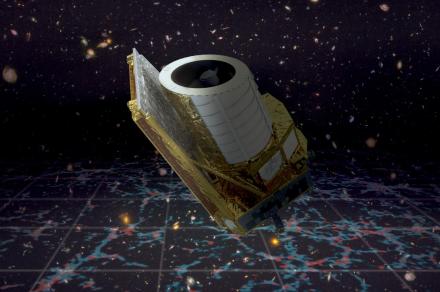The European Space Agency’s (ESA) Euclid space telescope, which launched in July this year to investigate the mysteries of dark matter and dark energy, has run into issues during its commissioning phase. Although the early calibration images looked good, since then the telescope has had problems with the instrument that helps it position itself by locking onto particular stars, called the Fine Guidance Sensor. The Fine Guidance Sensor has been intermittently failing to lock onto stars, which is making it difficult to orient the telescope in the right direction.
When working correctly, data from the Fine Guidance Sensor goes to the spacecraft’s attitude and orbit control system which keeps it in the right orientation. However as this has not been working as intended, the commissioning phase for the telescope has been extended so teams can investigate the issue. ESA’s Euclid mission is designed to explore the composition and evolution of the dark Universe.
The space telescope will create a great map of the large-scale structure of the Universe across space and time by observing billions of galaxies out to 10 billion light-years, across more than a third of the sky. Euclid will explore how the Universe has expanded and how structure has formed over cosmic history, revealing more about the role of gravity and the nature of dark energy and dark matter. ESA/Euclid/Euclid Consortium/NASA.
Background galaxies: NASA, ESA, and S. Beckwith (STScI) and the HUDF Team, CC BY-SA 3. 0 IGO “The issue of Euclid’s fine guidance is something we’ve all been concerned about.
Teams at ESA’s technical heart (ESTEC), mission control (ESOC), Astronomy Centre (ESAC) and industry have been working day and night, tirelessly for months, and I can’t thank them enough for their determination to resolve the issue,” said Euclid Operations Director Andreas Rudolph in a statement . “I’m relieved to say that initial tests are looking good. We’re finding many more stars in all our tests, and while it’s too early to celebrate and more observations are needed, the signs are very encouraging.
” Recommended Videos The teams have created updated software to address the issue, and the software fix has worked on a test version of the spacecraft which is kept at mission control. The update has now been sent to the telescope too, and the teams will be testing the telescope to see if it helps fix the issue. “Obviously, this is where we will have the real test of truth, as only the science images can provide us with absolute certainty that Euclid’s pointing is performing well,” said Giuseppe Racca, Euclid Project Manager.
“However, all evidence so far makes us very optimistic. We will continue to keep our fingers tightly crossed, but the restart of the performance verification phase gets nearer every day. ” Editors’ Recommendations Neptune has a dark spot of its own, and it has been imaged from Earth Euclid dark matter telescope arrives at its destination orbit Euclid mission launches to probe the mysteries of dark matter James Webb telescope searches for habitability in the famous TRAPPIST-1 system This one instrument has surveyed 2 million objects to understand dark energy.
From: digitaltrends
URL: https://www.digitaltrends.com/space/euclid-commissioning-issue/



